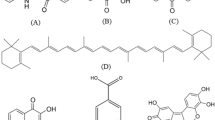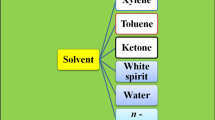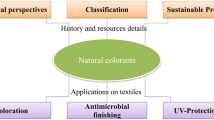Abstract
Jacopo Bellini’s Madonna of Humility painted around 1430-40 is a Venetian painting from the Louvre Museum (Paris). Jacopo Bellini, father of well-known Giovanni and Gentile Bellini, is the founder of a dynasty of Venetian painters (Dunkerton and Spring in Natl Gallery Tech Bull 39:4–25, 2018; Eisler in Abrams, Inc, New York, 1989). Although the British Museum and the Louvre Museum keep two important drawing books, very few paintings from Jacopo still exist today (Eisler in Abrams, Inc, New York, 1989). The study of the Madonna of Humility provided new data about early fifteenth century Venice painting practices, and in particular, the investigations brought to light two major points: the use of a still unusual gilding technique and one of the earliest occurrences of smalt in a painting. This study analyzed the composition of the pigments and gilding via stereomicroscopy and macroscopic X-ray fluorescence imaging. Scanning electron microscopy with energy-dispersive spectroscopy, Fourier transform infrared spectroscopy imaging, and X-ray absorption spectroscopy were performed on embedded micro-samples. Three gilding techniques have been identified. Besides the more common water and mordant gilding, the painting provides a very early example of shell gold use that could be investigated in depth. Unexpected smalt was identified in an underlayer of the Virgin’s dress and in the sky, here mixed with lapis lazuli, as in the most first known occurrences (Stege in Zeitschrift für Kunsttechnologie und Konservierung ZKK 18:121–142, 2004). Additionally, the elemental composition of the smalt particles showed unusual elements, such as copper, tin, and lead. The detailed study of the composition allows getting new insights into the origin of the cobalt ore and the way the glass pigment was prepared in this early recipe.








Similar content being viewed by others
Availability of data and materials
All data and materials, as well as software application, comply with field standards.
Notes
But it remains unclear if it was a crushed sodo-lime blue glass for mosaics or a potassic glass intended to be used as pigment.
Reference IRUG data number INR00079.
The Florin considered of pure gold is around 987/10000 following analysis.
Gilded dots on the dress of the woman behind the Virgin.
Gilded dots are seen in the Saint Madeleine dress.
Gold dots are used for the inner side of the Virgin dress.
References
J. Dunkerton, M. Spring, Natl. Gallery Tech. Bull. 39, 4–25 (2018)
C.T. Eisler, Genius of Jacopo Bellini: The Complete Paintings and Drawings, Abrams, Inc (1989)
H. Stege, Zeitschrift für Kunsttechnologie und Konservierung: ZKK 18, 121–142 (2004)
M. Alfed, K. Mösl, I. Reiche, X-Ray Spectrometry, 1–10 (2020)
I. Reiche, C. de Mecquenem, M. Eveno, in Les bleus et les verts : couleurs et lumières ed. Michel Menu, Anne-Solenn Le Hô (Paris, 2020) to be published
F. Delamare, in Comptes rendus des séances de l'Académie des Inscriptions et Belles-Lettres, 153, 1, (2009) p. 297
S. Panayotova and P. Ricciardi Colour, The Art and Science of Illuminated Manuscripts, ed. Stella Panayotova, 119–161 (2016)
I. Borgia, C. Seccaroni, OPD Restauro 17, 152–164 (2005)
G. Poldi, G. Carlo, F. Villa, National Gallery Technical Bulletin 30th Anniversary Conference Postprints, 28–36 (2011)
E. Ravaud, L. Pichon, E. Laval, V. Gonzalez, M. Eveno, T. Calligaro, Appl. Phys. A 122, 17 (2016)
P. Tack, B. Bazi, B. Vekemans, T. Okbinoglu, F. Van Maldeghem, S. Goderis, S. Schöder, L. Vincze, J. Synchrotron Radiat. 26(6), 2033–2039 (2019)
V.A. Solé, E. Papillon, M. Cotte, Ph. Walter, J. Susini, Spectrochim. Acta Part B 62, 63–68 (2007)
B. Ravel, M. Newville, J. Synchrotron Rad. 12, 537–541 (2005)
P. Moioli, C. Seccaroni, in Il Polittico dell’Intercessione di Gentile da Fabriano. Studi e restauro, ed Marco Ciatti, Cecilia Frosinini (Florence, 2006), p.199
C. Merzenich, Kermès, 51–71 (1996)
N. Morgan, in Colour—The art and science of illuminated manuscripts, ed S. Panayotova, (London, 2016) p 192–199
C. Lopes Aibéo, E. Egel, K. Müller, M.Alfeld, S. Schwerdtfeger, I. Reiche, Berliner Beiträge zur Archäometrie, Kunsttechnologie und Konservierungswissenschaft, 25, 149–157 (2017)
C. Cennini, Chapitre CLX in Il libro dell’arte, traduction critique, commentaires et notes par C. Desroches, (Paris, 1991) p. 280
D. Bomford, J. Dunkerton, D. Gordon, A. Roy, Art in the Making: Italian painting before 1400, London: National Gallery, 140 (1989)
Il Polittico dell’Intercessione di Gentile da Fabriano. Studi e restauro, Florence, ed Marco Ciatti, Cecilia Frosinini, (Florence, 2006)
L. Grassi, Tutta La Pittura Di Gentile Da Fabriano (Biblioteca d’Arte Rizzoli, Milan, 1953)
Gentile da Fabriano. Studi e ricerche, Andrea De Marchi, Laura Laureati, Lorenza Mochi Onori éd., (Milan, 2006)
E. Ravaud, M. Eveno in La technique picturale d’Andrea Mantegna, TECHNÈ Hors-série, ed M. Michel, E. Ravaud (Paris, 2009) p. 74
R.-E. Straub, in Reclams Handbuch der künstlerischen Techniken, (Stuttgart, 1984), 1, p. 240
L. Robinet, M. Spring, S. Pagès-Camagna, D. Vantelon, N. Trcera, Anal. Chem. 83(13), 5145–5152 (2011)
C. De Mecquenem, I. Reiche, M. Eveno, PCMTH_IR_2020_6 report (2020) https://hal.archives-ouvertes.fr
L. Robinet, M. Spring, S. Pages-Camagna, Anal. Methods 5, 4628 (2013)
J. Hartwig, Bulletin de l’Association Française pour l’Archéologie du Verre, 8–10 (2001)
B. Gratuze, L. Soulier, M. Blet, L. Vallauri, revue d'Archéométrie, 20, 77–94 (1996)
A. Zucchiatti, A. Bouquillon, I. Katona, A. D’Alessandrot, Archaeometry 48(1), 131–152 (2006)
I. Biron, M. Verità, J. Archaeol. Sci. 39, 2706–2713 (2012)
M. Verita, in ATTI Classe Di Scienze Fisiche, Matematiche e Naturali, 172 – I, Study days on venetian Glass approximately 1600’s, ed Rosa Barovier and Cristina Tonini, (Venezia 2014), p.59
Acknowledgements
We would like to thank Sebastian Schoeder Beamline responsible of PUMA, Ina Reiche CNRS research director for XANES analyses and Clément de Mecquenem internship student at PCMTH/C2RMF for the analysis processing. We also thank Ina Reiche for fruitful discussions and constructive comments on this manuscript and Anne-Solenn Le Ho Research Engineer at the C2RMF for her helpful comments in FTIR analyses.
Funding
Not applicable.
Author information
Authors and Affiliations
Contributions
All authors contributed equally to the study and to the manuscript. All authors read and approved the final manuscript.
Corresponding author
Ethics declarations
Conflict of interest
The authors declare that they have no conflict of interest.
Rights and permissions
About this article
Cite this article
Eveno, M., Ravaud, E. Early occurrences of the use of smalt and shell gold in the Madonna of Humility by Jacopo Bellini at the beginning of the fifteenth century. Eur. Phys. J. Plus 136, 685 (2021). https://doi.org/10.1140/epjp/s13360-021-01650-2
Received:
Accepted:
Published:
DOI: https://doi.org/10.1140/epjp/s13360-021-01650-2




